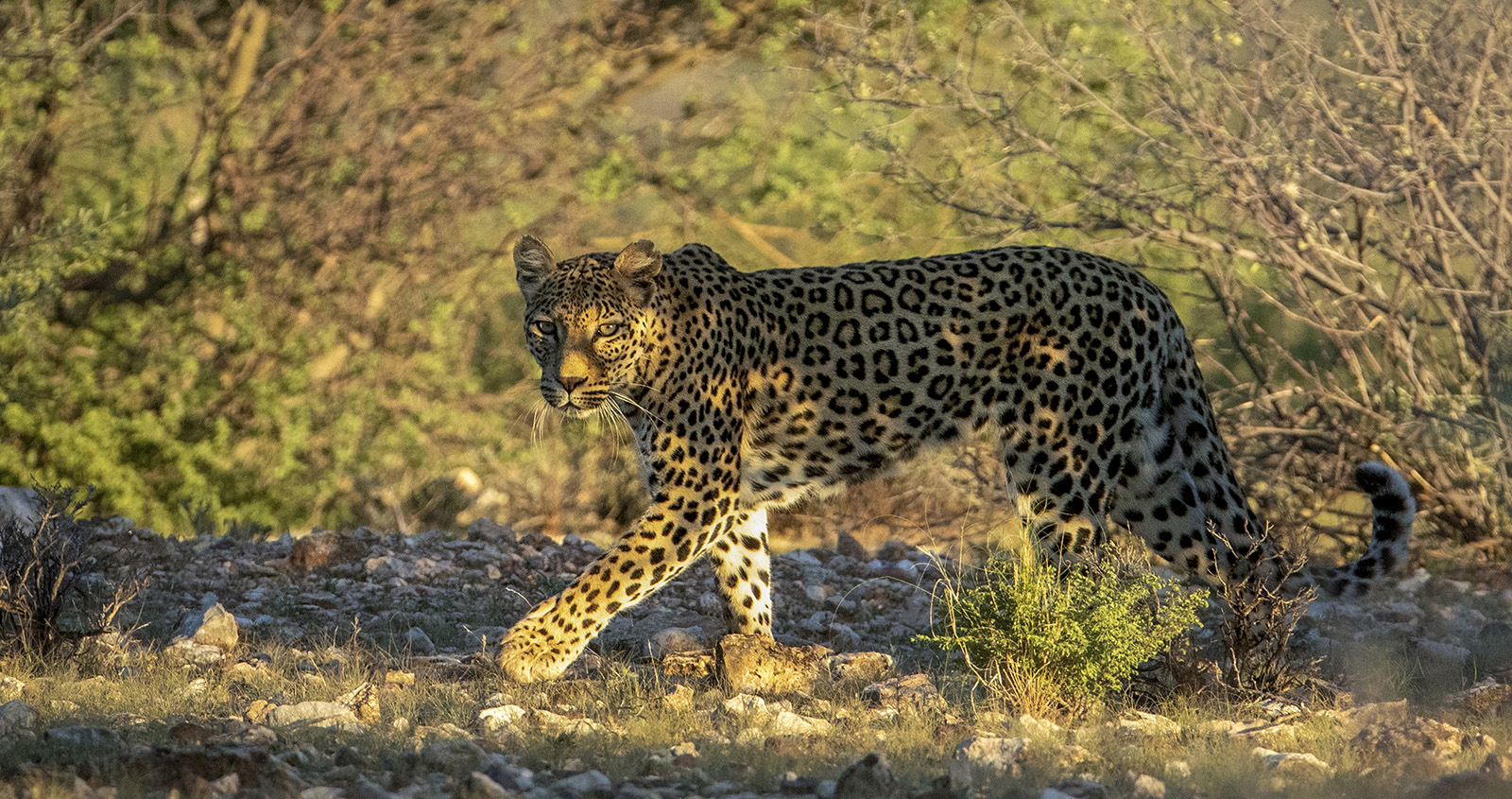A Cat of All Trades
The leopard stands out as an elusive, versatile, and adaptable animal. Researchers from the University of Copenhagen have just published the first genomic data for the African subspecies of the leopard in the acclaimed Cell Press journal Current Biology. The results showed an exceptionally high genetic diversity compared to other top predators, transforming our understanding of population dynamics in species at the top of the food chain
Large carnivores are generally sensitive to ecosystem changes because their specialized diet and position at the top of the trophic pyramid is associated with small population sizes. This in turn leads to lower genetic diversity in top predators compared to animals lower down the food chain. Genetic diversity is very important for a species’ ability to survive and adapt to future changes.
Extraordinary genetic diversity in an extraordinary cat
In this study, the researchers sequenced the complete genome of 53 African leopards and compared them to the Amur leopards and other big cat species. To their surprise, the researchers found that the genetic diversity of African leopards is extremely high: Almost four times higher than the Amur leopard’s, twice as high as the lion’s and almost five times higher than the cheetah’s.
Patrícia Pečnerová, postdoc at the Department of Biology and one of the shared first authors, explains:
- “The exceptional genetic diversity is likely a result of the leopard’s ability to avoid population crashes and reductions. We found that during hundreds of thousands of years, African leopard populations remained large. We think that this reflects the versatility of the species, feeding on a wider variety of prey than any of the other large predators.”

Roaming every habitat in Africa - but for how long?
The high genetic diversity of the African leopards is not the only surprise hidden in the leopard genomes. They also show fewer genetic barriers within the continent of Africa than other mammal species.
Kristian Hanghøj, one of the corresponding authors of the study explains:
- “We believe that during evolutionary history the leopard roamed the African continent more freely than almost any other mammal species, exchanging genetic material throughout. It has a unique ability to succeed in almost any habitat and climate and neither rain forests, nor deserts seem to have blocked the movements of leopards over the millennia.”
The surprising findings demonstrate how the ecology of a species - such as how ‘picky’ it is about habitat and prey, can influence its genomic variation. The exceptionally high genetic diversity could give the African leopard an advantage in coping with environmental challenges, including climate change and habitat destruction.
However, habitat fragmentation is a severe threat to all large animals, even those as adept at coping with human presence as the leopard. The human-made changes to natural habitats are occurring at a pace that is likely too fast for almost any wild animal species to adapt to, and previous studies have shown that African leopards have lost 48-67% of their natural habitat over the last 300 years.
- “To place our results into a greater context, we emphasize that the African leopard is also facing severe threats to its survival, despite being sort of an evolutionary success”, finishes Patrícia Pečnerová.
Kontakt
Rasmus Heller
Department of Biology
University of Copenhagen
Mail: rheller@bio.ku.dk
Phone: +45 29 29 92 27
Kristian Hanghøj
Department of Biology
University of Copenhagen
Mail: k.hanghoej@bio.ku.dk
Phone: +45 35 33 22 03
Patrícia Chrzanová Pecnerová
Department of Biology
University of Copenhagen
Mail: patricia.pecnerova@bio.ku.dk
Phone:+45 35 32 40 17
Helle Blæsild
PR & Communication
Department of Biology
University of Copenhagen
Mail: helleb@bio.ku.dk
Phone: +45 28 75 20 76
Sidsel Kretzschmer Henriksen
Science Communication
Department of Biology
University of Copenhagen
Mail: sidsel.henriksen@bio.ku.dk
Phone: +45 29 70 70 92
Funding
The study was supported financially by the Villum Foundation, the Danish Research Council, the Lundbeck Foundation, Innovation Fund Denmark, Candys Foundation and the Alfred Benzon Foundation.
